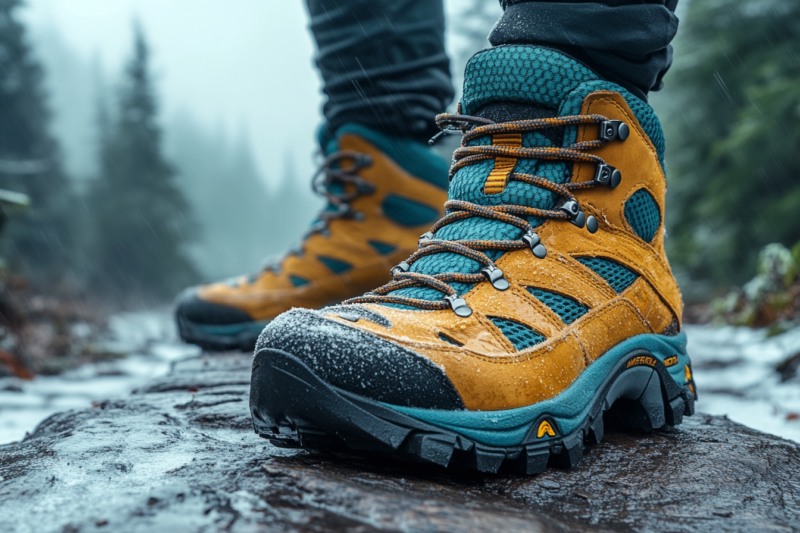Hiking in cold or unpredictable weather requires more than just a warm jacket. The secret to staying comfortable on the trail is mastering the science of layering—a system that allows hikers to regulate body temperature, manage moisture, and protect against the elements.
Whether you’re tackling a brisk autumn hike or braving subzero conditions in the backcountry, knowing how to layer properly will keep you warm, dry, and safe. In this guide, we’ll break down the essential layering system, explain fabric choices, and provide expert tips to maximize your comfort on any trail.
Why Layering Matters in Hiking
Layering isn’t just about warmth—it’s about versatility and adaptability. The body generates heat while moving but cools quickly when resting, making temperature regulation crucial. A well-planned layering system provides:
✔ Efficient moisture management to prevent sweat from chilling your body.
✔ Temperature control through removable layers that adjust to activity levels.
✔ Protection from wind, rain, and snow, reducing the risk of hypothermia.
The Three-Layer System: A Breakdown
The layering system is built around three core layers, each serving a unique function:
1. Base Layer: Moisture Management
The base layer is worn directly against the skin and serves as the foundation of your layering system. Its primary function is wicking moisture away from the skin to keep you dry.
Best Fabrics for Base Layers:
✅ Merino Wool – Excellent at moisture-wicking, odor resistance, and temperature regulation.
✅ Synthetic Fabrics (Polyester, Nylon, Polypropylene) – Quick-drying and lightweight but less odor-resistant.
🚫 Avoid Cotton – Absorbs moisture and dries slowly, leading to heat loss.
Base Layer Recommendations:
- Lightweight Base Layer – Best for cool temperatures and high-intensity activities.
- Midweight Base Layer – Ideal for colder conditions or lower-intensity hikes.
- Heavyweight Base Layer – Used in frigid temperatures or winter expeditions.
2. Mid Layer: Insulation & Heat Retention
The mid layer traps body heat and keeps warmth close to your core while remaining breathable.
Best Fabrics for Mid Layers:
✅ Fleece – Lightweight, breathable, and warm even when damp.
✅ Down Insulation – Excellent warmth-to-weight ratio but loses warmth when wet.
✅ Synthetic Insulation (Primaloft, Polartec Alpha) – Stays warm even when wet, dries quickly.
Mid Layer Recommendations:
- Fleece Jacket – Great for mild to moderate cold.
- Down Jacket or Synthetic Puffer – Ideal for extreme cold and packability.
- Softshell Jacket – A hybrid between insulation and wind protection.
3. Outer Layer: Weather Protection
The outer layer (shell layer) shields you from wind, rain, and snow, keeping your other layers dry and effective.
Types of Outer Layers:
✅ Hardshell Jackets – Fully waterproof and windproof with breathable membranes (e.g., Gore-Tex).
✅ Softshell Jackets – Water-resistant and breathable, ideal for dry conditions.
✅ Rain Jackets & Ponchos – Lightweight, packable protection for wet weather.
🚫 Avoid Non-Breathable Waterproof Gear – Cheap rain jackets can trap sweat, making you wetter from the inside.
How to Layer Based on Weather Conditions
| Condition | Base Layer | Mid Layer | Outer Layer |
|---|---|---|---|
| Cool & Dry | Lightweight merino wool | Fleece jacket | Softshell jacket |
| Cold & Dry | Midweight synthetic or wool | Down or synthetic puffer jacket | Windproof shell |
| Wet & Mild | Quick-dry synthetic base layer | Light fleece | Waterproof rain jacket |
| Frigid Conditions | Heavyweight wool base layer | Insulated down/synthetic jacket | Hardshell waterproof jacket |
Additional Layering Tips for Maximum Warmth
1. Adjust Layers as You Hike
Regulate your body temperature by adding or removing layers:
✅ Start with fewer layers to avoid overheating.
✅ Add insulation when stopping for breaks.
✅ Keep your outer shell easily accessible in case of sudden weather changes.
2. Use Accessories to Retain Heat
- Hats & Balaclavas – 30-50% of body heat escapes through the head.
- Gloves & Mittens – Choose insulated gloves for warmth and dexterity.
- Gaiters – Prevent snow, rain, and debris from entering boots.
3. Layer Your Legs Too
✅ Base Layer: Thermal leggings or fleece-lined tights.
✅ Mid Layer: Fleece pants or synthetic insulated pants (for extreme cold).
✅ Outer Layer: Waterproof rain pants or windproof softshell pants.
4. Keep a Backup Dry Layer
Always carry an extra dry base layer in your backpack. Wet clothing in cold weather can quickly lead to hypothermia.
Common Mistakes to Avoid
🚫 Overdressing: Too many layers lead to excessive sweating, which cools the body down when you stop moving.
🚫 Ignoring Ventilation: Many jackets have pit zips or side vents—use them to prevent overheating.
🚫 Using Cotton Layers: Cotton absorbs moisture, keeping you cold and wet.
🚫 Skipping the Outer Layer in Windy Conditions: Even a light breeze can strip away body heat if you’re not protected.
Mastering the science of layering is essential for staying warm, dry, and comfortable while hiking in various conditions. By choosing moisture-wicking base layers, insulating mid-layers, and protective outer shells, you can adapt to any weather without discomfort.
From Base to Shell: Your Trail Armor
Whether you’re embarking on a multi-day trek in the mountains or a day hike in chilly conditions, a smart layering system ensures optimal temperature control and weather protection.
Ready to gear up? Check out our expert recommendations for the best hiking clothing and layering essentials to keep you warm on your next adventure!




